Get free scan and check if your device is infected.
Remove it nowTo use full-featured product, you have to purchase a license for Combo Cleaner. Seven days free trial available. Combo Cleaner is owned and operated by RCS LT, the parent company of PCRisk.com.
What kind of malware is Spectrum?
Spectrum is a piece of malware written in the Go programming language, specifically designed to steal sensitive information from infected devices. Due to this functionality, it is categorized as an information stealer. Spectrum should be eliminated as soon as possible if present on the system.
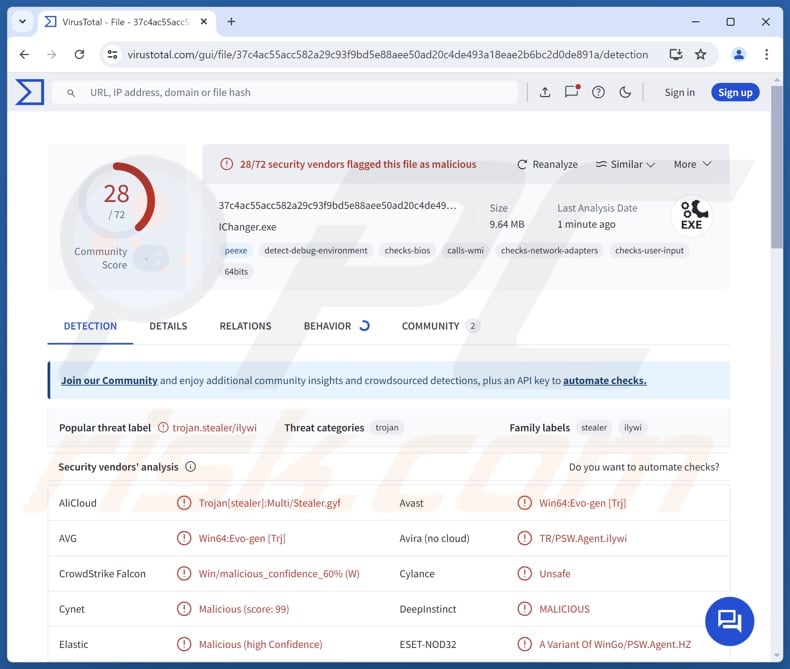
More about Spectrum
Once executed, Spectrum gathers system information. It collects details about the operating system, hardware, and IP addresses to help attackers identify and track victims. This information could be used for further attacks and (or) determine the geographical location of compromised devices.
One of Spectrum's targets is web browsers, where it extracts stored login credentials, credit card details, and browsing history. Attackers can exploit this capability to hijack accounts, steal financial information, and commit identity fraud. They may be capable of accessing banking accounts and cryptocurrency wallets, leading to unauthorized transactions or fund theft.
With access to other accounts (e.g., email or social media), cybercriminals may be able to harvest more personal details, send phishing emails (or malware) to other users, and perform other actions. Spectrum can also steal authentication tokens from applications like Discord, allowing unauthorized access to user profiles.
In addition to credential theft, Spectrum captures screenshots of the infected system. This feature allows attackers to track what the victim is doing, potentially revealing private messages, open documents, or other personal information. The malware also harvests saved Wi-Fi credentials, enabling attackers to compromise networks.
Once all data is collected, the malware transmits the stolen information to the threat actors' command and control server.
| Name | Spectrum information stealer |
| Threat Type | Stealer |
| Detection Names | Avast (Win64:Evo-gen [Trj]), Avira (Win64:Evo-gen [Trj]), ESET-NOD32 (A Variant Of WinGo/PSW.Agent.HZ), Kaspersky (VHO:Trojan-PSW.Win32.Stealer.gen), Microsoft (Trojan:Win32/Wacatac.B!ml), Full List (VirusTotal) |
| Symptoms | Information stealers are designed to stealthily infiltrate the victim's computer and remain silent, and thus no particular symptoms are clearly visible on an infected machine. |
| Distribution methods | Infected email attachments, malicious online advertisements, social engineering, software 'cracks'. |
| Damage | Stolen passwords and banking information, identity theft, financial loss, privacy breaches, and more. |
| Malware Removal (Windows) |
To eliminate possible malware infections, scan your computer with legitimate antivirus software. Our security researchers recommend using Combo Cleaner. Download Combo CleanerTo use full-featured product, you have to purchase a license for Combo Cleaner. 7 days free trial available. Combo Cleaner is owned and operated by RCS LT, the parent company of PCRisk.com. |
Conclusion
Spectrum is a quite powerful information stealer that poses a serious threat to users of infected computers by extracting sensitive data, including credentials, financial details, and system information. Users should stay vigilant, avoid untrusted downloads, and implement strong security measures to minimize the risk of infection.
Examples of other information stealers are Salat Stealer, DieStealer, and Pentagon Stealer.
How did Spectrum infiltrate my computer?
Threat actors use various methods to deploy malware. They often send emails containing malicious attachments or links, hide malware in cracking tools, keygens, or pirated (or fake) programs, or leverage vulnerabilities in outdated software or operating systems to lure users into executing malware.
Cybercriminals also use malicious advertisements, compromised (or deceptive) websites, infected USB drives, technical support scams, P2P networks, third-party downloaders, and similar channels. Their goal is usually to deceive users into taking actions that result in malware infiltrating their computers.
How to avoid installation of malware?
Download software from official websites (or app stores). Avoid using questionable sources and downloading pirated software. Do not click pop-ups, ads, buttons, or links on dubious websites, and do not agree to receive notifications from web pages of this kind. Be careful with suspicious emails containing links or attachments.
Regularly update the operating system and installed programs, and use a reliable security tool. If you believe that your computer is already infected, we recommend running a scan with Combo Cleaner Antivirus for Windows to automatically eliminate infiltrated malware.
Instant automatic malware removal:
Manual threat removal might be a lengthy and complicated process that requires advanced IT skills. Combo Cleaner is a professional automatic malware removal tool that is recommended to get rid of malware. Download it by clicking the button below:
DOWNLOAD Combo CleanerBy downloading any software listed on this website you agree to our Privacy Policy and Terms of Use. To use full-featured product, you have to purchase a license for Combo Cleaner. 7 days free trial available. Combo Cleaner is owned and operated by RCS LT, the parent company of PCRisk.com.
Quick menu:
- What is Spectrum?
- STEP 1. Manual removal of Spectrum malware.
- STEP 2. Check if your computer is clean.
How to remove malware manually?
Manual malware removal is a complicated task - usually it is best to allow antivirus or anti-malware programs to do this automatically. To remove this malware we recommend using Combo Cleaner Antivirus for Windows.
If you wish to remove malware manually, the first step is to identify the name of the malware that you are trying to remove. Here is an example of a suspicious program running on a user's computer:
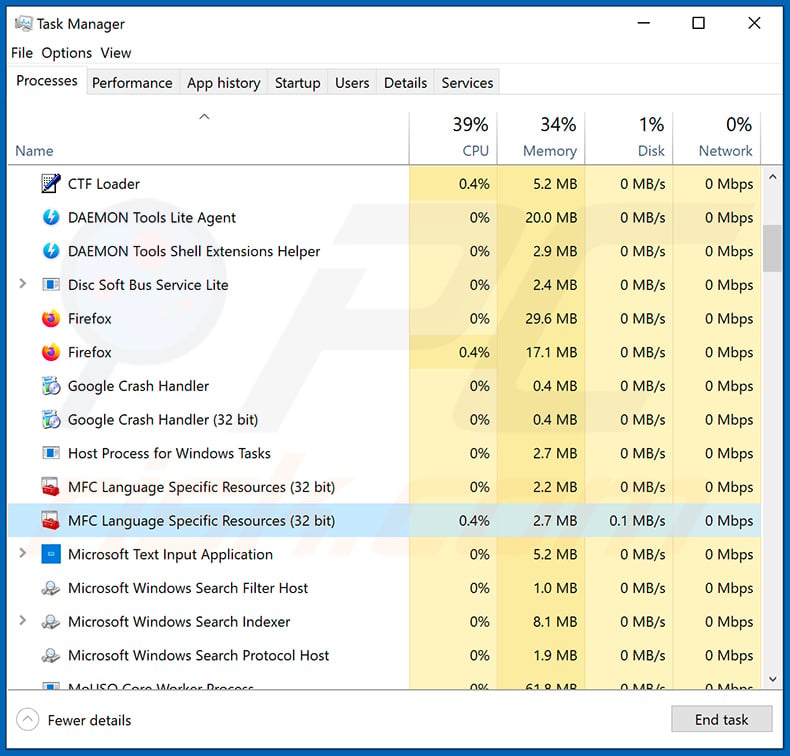
If you checked the list of programs running on your computer, for example, using task manager, and identified a program that looks suspicious, you should continue with these steps:
 Download a program called Autoruns. This program shows auto-start applications, Registry, and file system locations:
Download a program called Autoruns. This program shows auto-start applications, Registry, and file system locations:
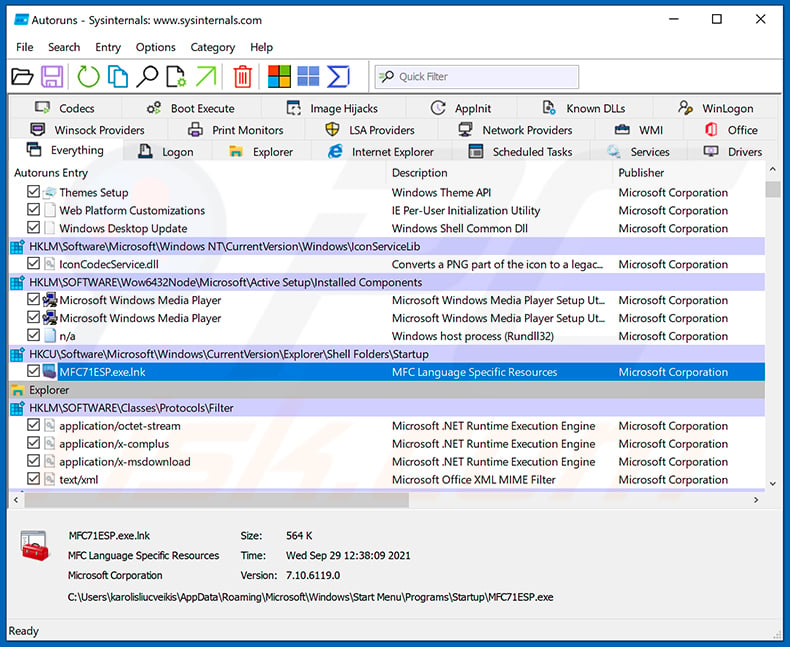
 Restart your computer into Safe Mode:
Restart your computer into Safe Mode:
Windows XP and Windows 7 users: Start your computer in Safe Mode. Click Start, click Shut Down, click Restart, click OK. During your computer start process, press the F8 key on your keyboard multiple times until you see the Windows Advanced Option menu, and then select Safe Mode with Networking from the list.
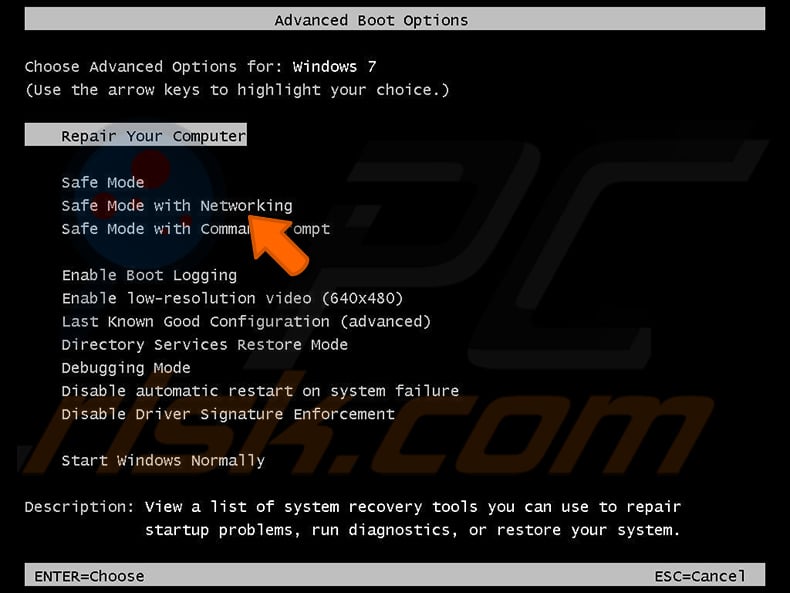
Video showing how to start Windows 7 in "Safe Mode with Networking":
Windows 8 users: Start Windows 8 is Safe Mode with Networking - Go to Windows 8 Start Screen, type Advanced, in the search results select Settings. Click Advanced startup options, in the opened "General PC Settings" window, select Advanced startup.
Click the "Restart now" button. Your computer will now restart into the "Advanced Startup options menu". Click the "Troubleshoot" button, and then click the "Advanced options" button. In the advanced option screen, click "Startup settings".
Click the "Restart" button. Your PC will restart into the Startup Settings screen. Press F5 to boot in Safe Mode with Networking.
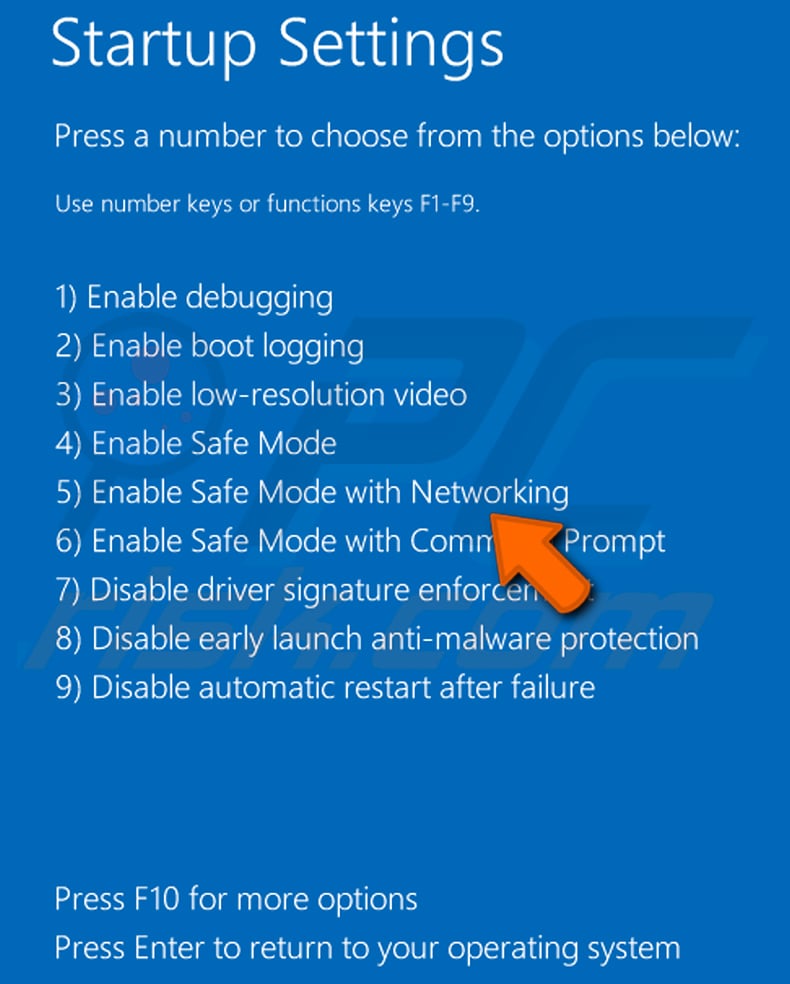
Video showing how to start Windows 8 in "Safe Mode with Networking":
Windows 10 users: Click the Windows logo and select the Power icon. In the opened menu click "Restart" while holding "Shift" button on your keyboard. In the "choose an option" window click on the "Troubleshoot", next select "Advanced options".
In the advanced options menu select "Startup Settings" and click on the "Restart" button. In the following window you should click the "F5" button on your keyboard. This will restart your operating system in safe mode with networking.
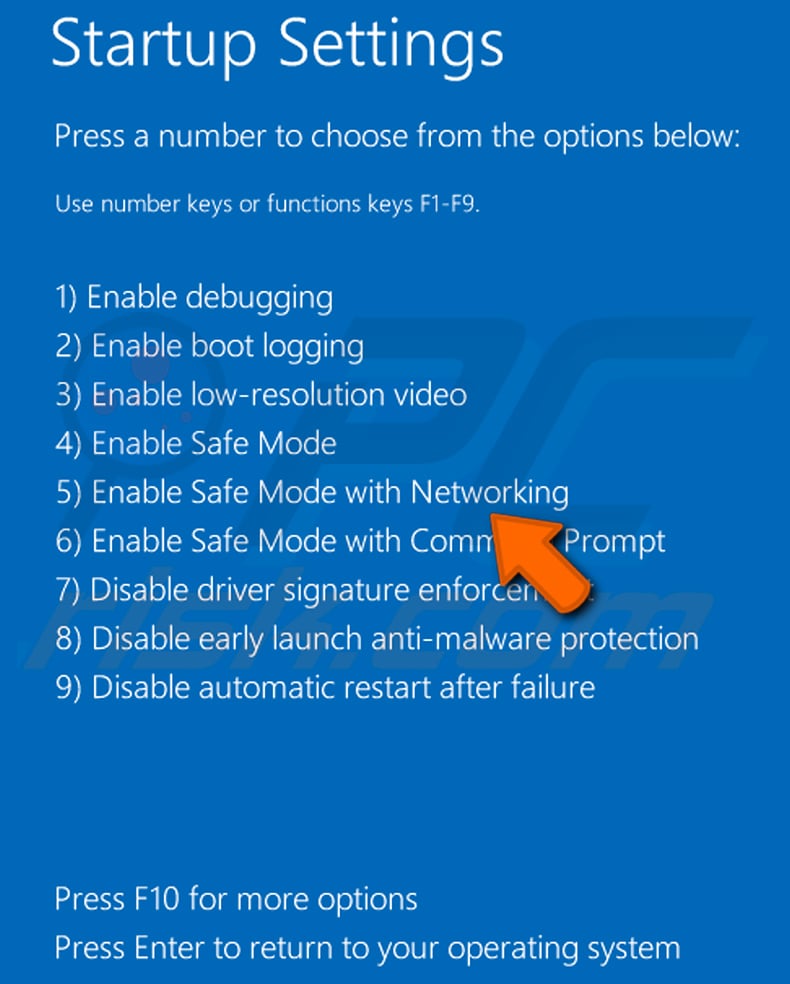
Video showing how to start Windows 10 in "Safe Mode with Networking":
 Extract the downloaded archive and run the Autoruns.exe file.
Extract the downloaded archive and run the Autoruns.exe file.
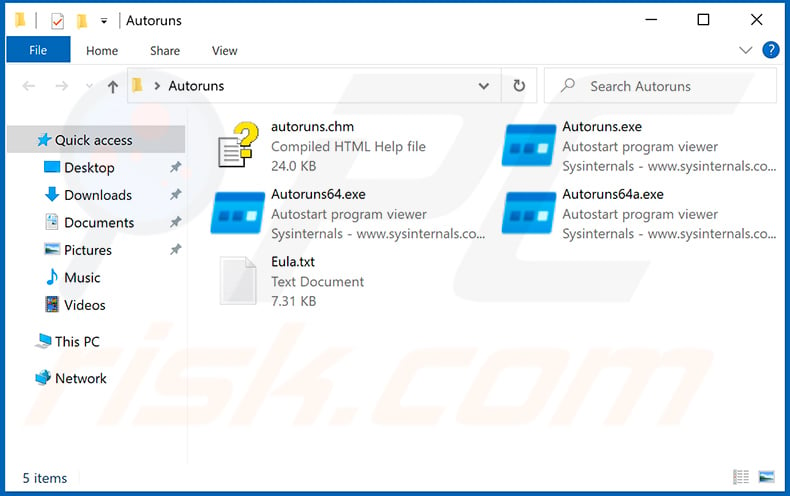
 In the Autoruns application, click "Options" at the top and uncheck "Hide Empty Locations" and "Hide Windows Entries" options. After this procedure, click the "Refresh" icon.
In the Autoruns application, click "Options" at the top and uncheck "Hide Empty Locations" and "Hide Windows Entries" options. After this procedure, click the "Refresh" icon.
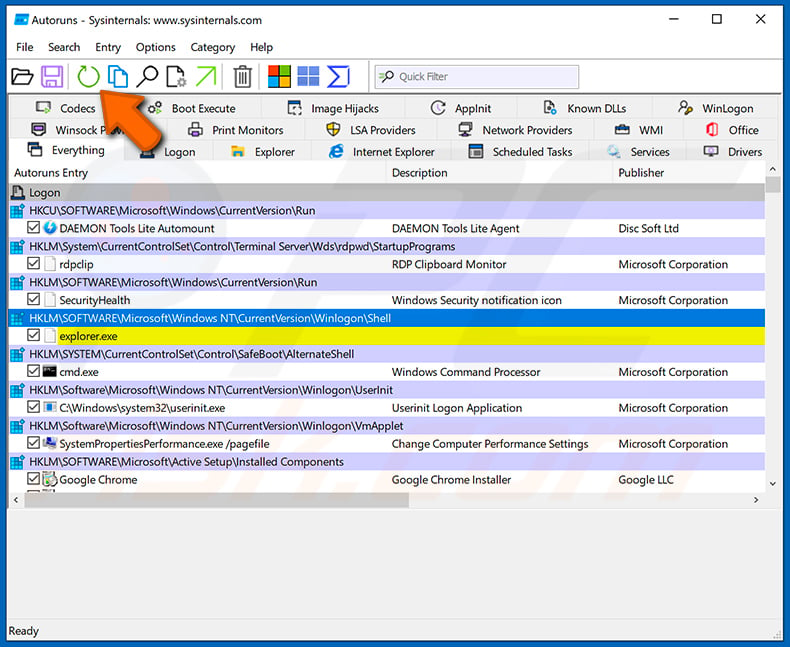
 Check the list provided by the Autoruns application and locate the malware file that you want to eliminate.
Check the list provided by the Autoruns application and locate the malware file that you want to eliminate.
You should write down its full path and name. Note that some malware hides process names under legitimate Windows process names. At this stage, it is very important to avoid removing system files. After you locate the suspicious program you wish to remove, right click your mouse over its name and choose "Delete".
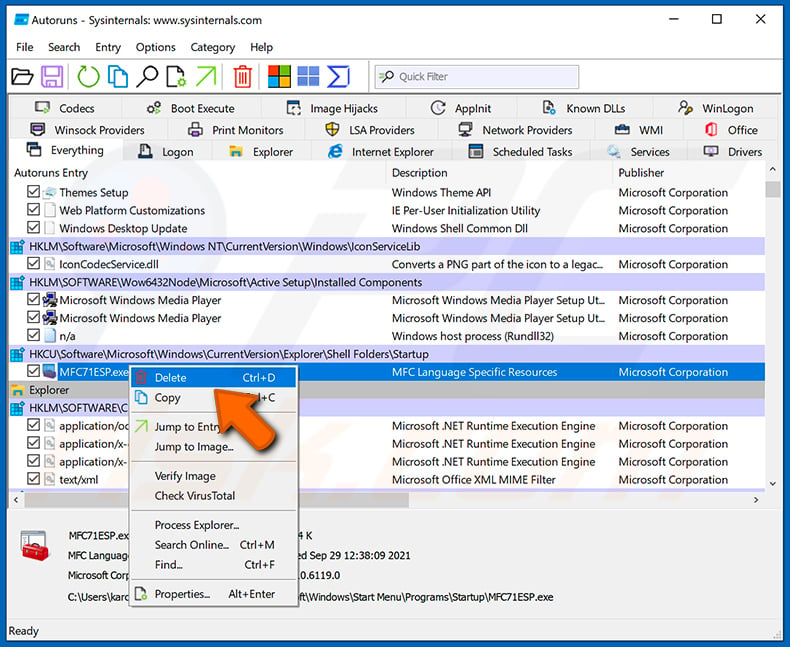
After removing the malware through the Autoruns application (this ensures that the malware will not run automatically on the next system startup), you should search for the malware name on your computer. Be sure to enable hidden files and folders before proceeding. If you find the filename of the malware, be sure to remove it.
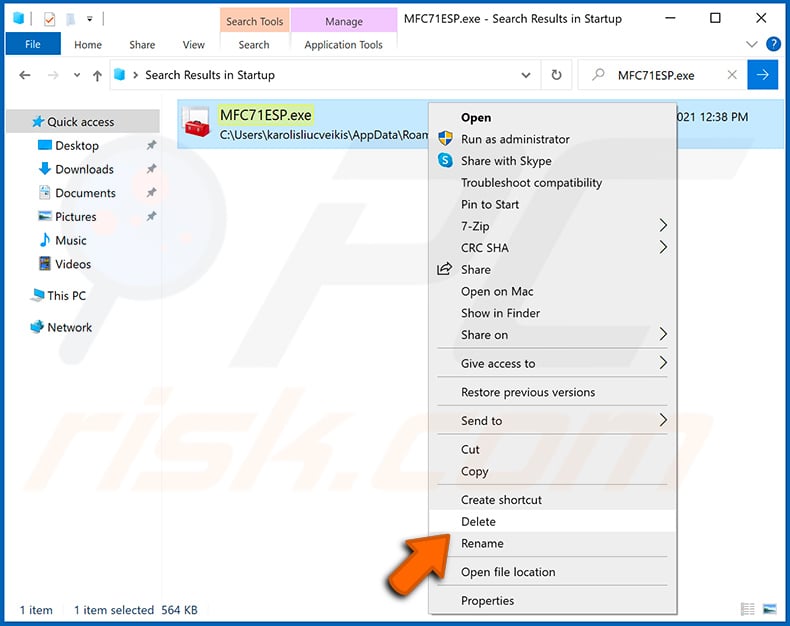
Reboot your computer in normal mode. Following these steps should remove any malware from your computer. Note that manual threat removal requires advanced computer skills. If you do not have these skills, leave malware removal to antivirus and anti-malware programs.
These steps might not work with advanced malware infections. As always it is best to prevent infection than try to remove malware later. To keep your computer safe, install the latest operating system updates and use antivirus software. To be sure your computer is free of malware infections, we recommend scanning it with Combo Cleaner Antivirus for Windows.
Frequently Asked Questions (FAQ)
My computer is infected with Spectrum malware, should I format my storage device to get rid of it?
Although formatting your storage device can eliminate Spectrum malware, it can lead to permanent data loss (if not backed up). Thus, it is advisable to scan and clean your system using a reliable malware removal tool, such as Combo Cleaner.
What are the biggest issues that malware can cause?
Malware infiltration can result in severe outcomes, such as identity theft, financial loss, system performance issues, additional infections, and data encryption. The level of damage varies based on the type of malware and its capabilities.
What is the purpose of Spectrum malware?
The purpose of Spectrum malware is to steal sensitive information from infected devices, including login credentials, financial data, and personal details, which can be exploited for identity theft, fraud, unauthorized access to accounts, and other malicious purposes.
How did Spectrum infiltrate my computer?
Threat actors deploy malware through various methods, such as sending phishing emails with malicious attachments or links, hiding malware in cracked tools or pirated software, and exploiting vulnerabilities in outdated systems. They also use malicious ads, compromised websites, infected USB drives, technical support scams, and P2P networks to trick users into executing malware.
Will Combo Cleaner protect me from malware?
Combo Cleaner is capable of identifying and removing most known malware, but advanced threats can sometimes hide deep within the system. To ensure complete removal of these concealed threats, it is essential to run a full system scan.
Share:

Tomas Meskauskas
Expert security researcher, professional malware analyst
I am passionate about computer security and technology. I have an experience of over 10 years working in various companies related to computer technical issue solving and Internet security. I have been working as an author and editor for pcrisk.com since 2010. Follow me on Twitter and LinkedIn to stay informed about the latest online security threats.
PCrisk security portal is brought by a company RCS LT.
Joined forces of security researchers help educate computer users about the latest online security threats. More information about the company RCS LT.
Our malware removal guides are free. However, if you want to support us you can send us a donation.
DonatePCrisk security portal is brought by a company RCS LT.
Joined forces of security researchers help educate computer users about the latest online security threats. More information about the company RCS LT.
Our malware removal guides are free. However, if you want to support us you can send us a donation.
Donate
▼ Show Discussion